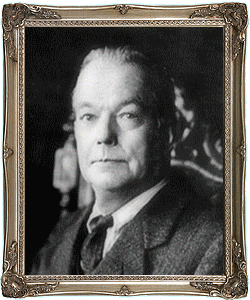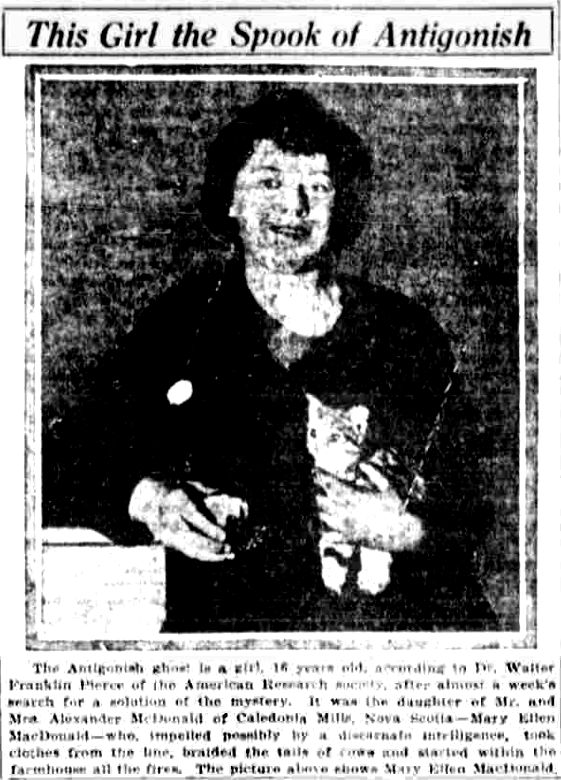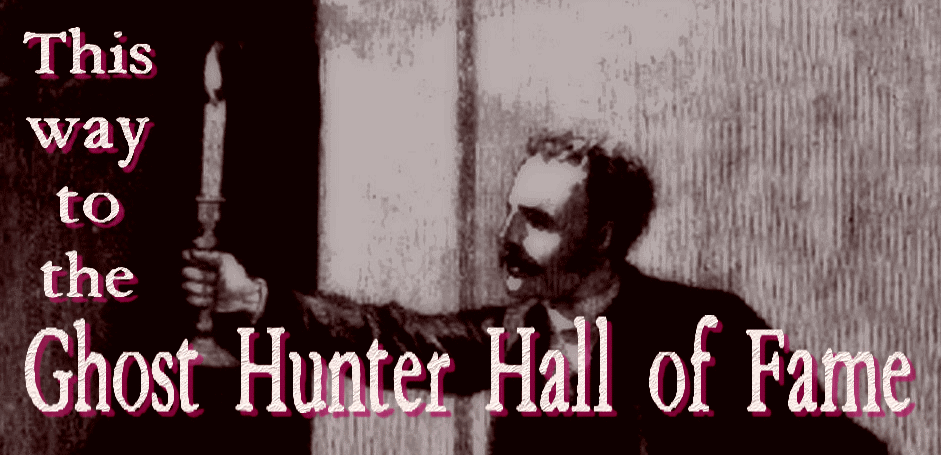
A Third Poltergeist Case in Nova Scotia
In 1922, when Walter Prince (1863-1934) left New York to investigate poltergeist activity in Nova Scotia, he knew about two similar cases that had occurred earlier in that same Canadian province. The first was fairly old: the Great Amherst Mystery. Walter Hubbell had written a book about his investigation of it back in 1879, Hereward Carrington had done a follow-up in 1907, and Prince himself made a critical study of it in 1919. Another poltergeist had been reported in Windsor, Nova Scotia, in 1906, and Carrington had investigated that, too — and debunked it. Prince had done his homework on these two cases when he arrived at the peninsula in March.
This time, the poltergeist had struck in the Caledonia Mills area of Antigonish County, a region with a history of hauntings. Prince had to endure a freezing, 22-mile sleigh ride to reach the site (but, hey, this makes him the only confirmed sleigh-riding ghost hunter in the Ghost Hunter Hall of Fame). It was on Alexander and Janet MacDonald’s remote farm where the couple had discovered that some unseen person — or unseen something — was moving livestock around and braiding the horses’ tails. At some point, a passing fisherman witnessed bluish lights around the MacDonald place. Things had become truly unnerving in January, when a series of mysterious fires erupted inside the farmhouse, appearing in rapid succession! One newspaper report says:
Thirty or more fires are said to have broken out. The majority of them were in odd places, behind pictures on the wall, on the bare wallpaper, in boxes under sofas, and in upholstering. A cushion which had been left upstairs a few moments earlier was found blazing in the parlor downstairs.
The situation grew so disturbing and dangerous that the MacDonalds, an elderly couple with an adopted daughter named Mary Ellen, left their house in the middle of a Canadian winter.
A Second Investigation
The first official investigation was conducted by Peter Owen Carroll, a retired Chief of Police and well-respected detective. He was accompanied by Harold B. Whidden, a reporter from Halifax. They held a vigil the first night, but nothing happened. On the second night, though, they heard sounds like footsteps coming from an unoccupied room above them. Both men also received disembodied slaps, each then insisting he wasn’t pulling a prank. This startling discovery found its way into newspapers as far away as Salem, Oregon, if not farther.
That’s when Walter Franklin Prince made arrangements to investigate. He went as a representative of the American Institute of Scientific Research. Prince was associated with the American Society for Psychical Research (ASPR), too, and according to the press, he had “the solution of several ghost mysteries to his credit — but he has never met a ghost.”

The fact that Prince was reported to have never personally encountered a genuine ghost doesn’t mean he intended to debunk the Antigonish fire-starting specter. In fact, in his ASPR report, he cites personal experience with ghostly phenomena:
In my own 'haunted house' in New Jersey, a member of my family was frightened one night by repeated sensations as of the bedclothes being pulled while she was awake. Afterwards, by accident, a lady who had no knowledge of this told me of an exactly similar experience which she had when she rented rooms in the same otherwise empty house a year before, and which made her flee the house. These appear to be facts; explain them as you may; only you must not form a theory that does not account for all the facts.
Prince Diagnoses Mary Ellen with Hysteria
Prince spent six days at the farmhouse, investigating the fire damage and interviewing the MacDonalds and other witnesses. His report presents ample evidence supporting the conclusion that the mysterious fires had not been ignited directly by some supernatural entity such as a poltergeist. Rather, they had been set by the MacDonalds’ daughter. Mary Ellen wasn’t to blame, though. Prince says: “The girl had a form of hysteria and was in an altered state of consciousness, which she afterwards imperfectly, or not at all, remembered.”
From the late 1800s through well into the 1900s, “hysteria” was an umbrella diagnosis used to explain an array of psychological conditions, almost always those of women. As early as 1877, ghost hunter William F. Barrett mentioned this as a possible explanation behind a comparable case of poltergeist phenomena occurring around a young woman named Maggie. Barrett says:
Had some of my medical and physiological friends been with me they would have argued that there was no need for further wasting our time. Maggie, they would have said, was evidently one of that numerous class of hysteroid sufferers who, without moral obliquity, are impelled to trick and cheat and play foolish pranks under the morbid influence of a well known disease. The case, they tell us, is by no means rare; in fact, it is extremely common among girls at her age.
Interestingly, Barrett rejected this idea. Prince relied on it to analyze the case. His evidence includes:
- the height at which the fires were ignited, no higher than Mary Ellen could reach;
- the lack of “satisfactory evidence that any fire broke out where the girl could not have been a few minutes earlier”
- combustible fluids being readily available; and
- the fact that nothing happened the whole time he was at the house without Mary Ellen present.
Or Maybe It Was Supernatural
Still, Prince doesn’t rule out the notion that “a discarnate intelligence incited the childish consciousness of the girl — that it was a case of obsession.” Either way, Mary Ellen was reported to be the source of the haunting.

What about the noises and slaps Carroll and Whidden encountered during their earlier investigation? Prince explains this in his ASPR report by proclaiming Whidden to be psychic. To test such a possibility, while still at Caledonia Mills, he tried an experiment in automatic writing (or writing in a trance state). He started with Whidden. Nothing happened in the first trial, but the second was successful “to a rather volcanic degree.” Prince acknowledges that Whidden’s gush of weird communication might have come from the test subject’s own subconscious or his strong sense of expectation. However, the open-minded scientist also raises the possibility that some supernatural entity was communicating through Whidden. If so, this supports the theory that Mary Ellen’s actions were also controlled by a roaming spirit: “If — and I only say if — the girl was temporarily obsessed to perform acts not properly her own, the ‘communication’ through Mr. Whidden . . . would be consistent enough.”
And with this refusal to completely dismiss a pestilent ghost or an even darker presence controlling Mary Ellen and Whidden, Prince ends the report of his Caledonia Hills investigation. He never claims to have solved the mystery. Instead, he says he is sharing his findings and speculations solely to add to the body of knowledge concerning haunted houses and poltergeist phenomena.


